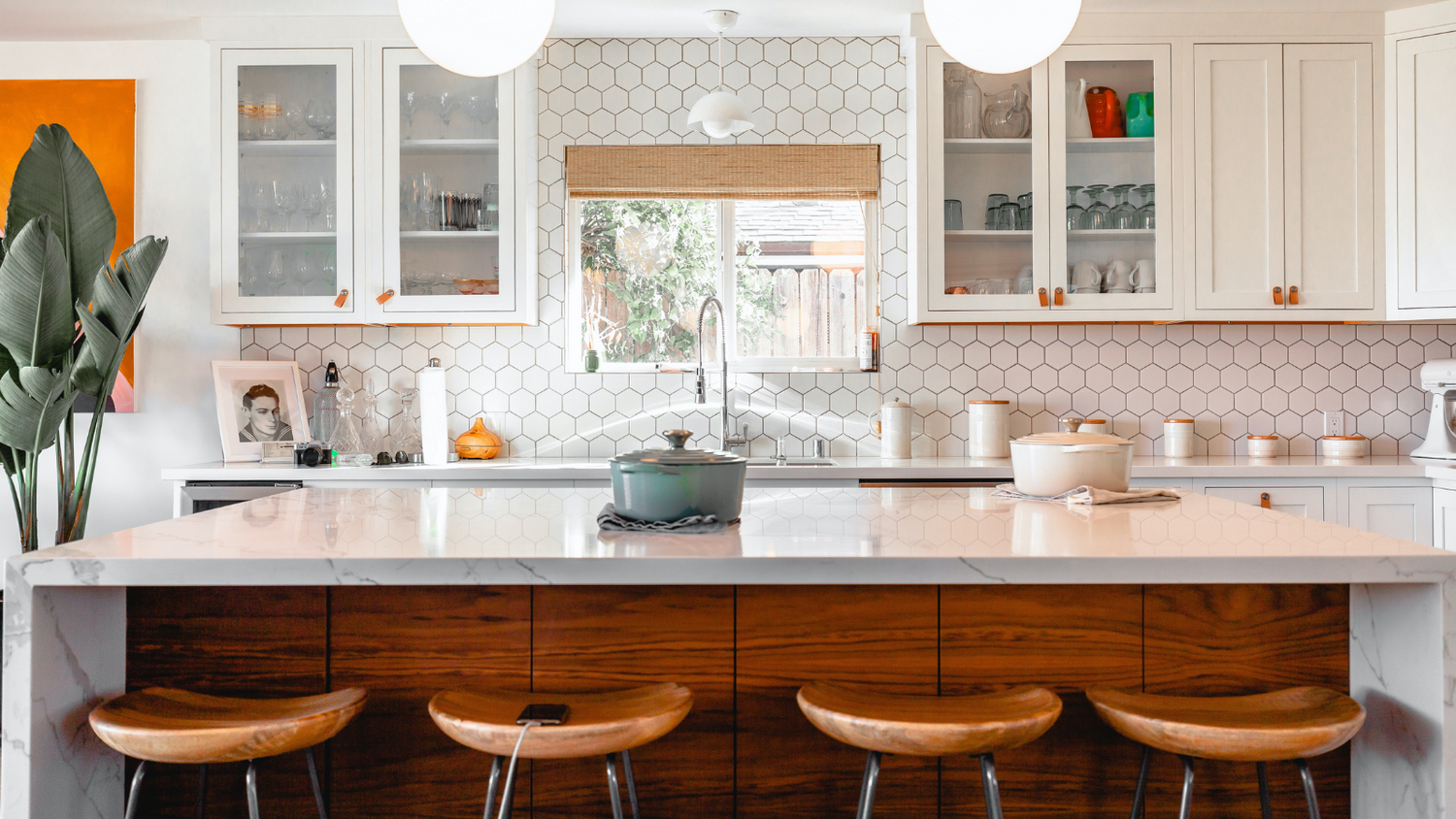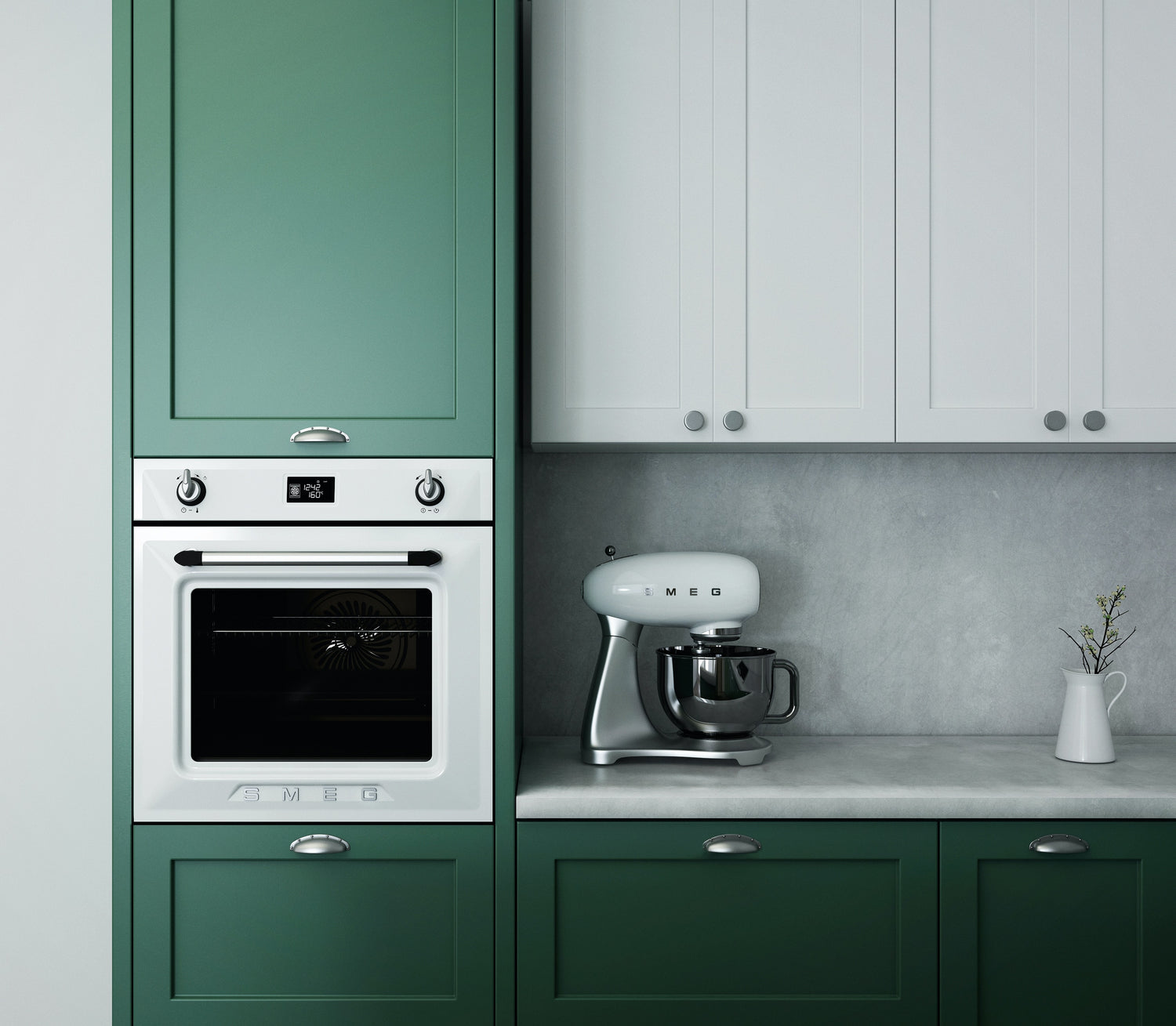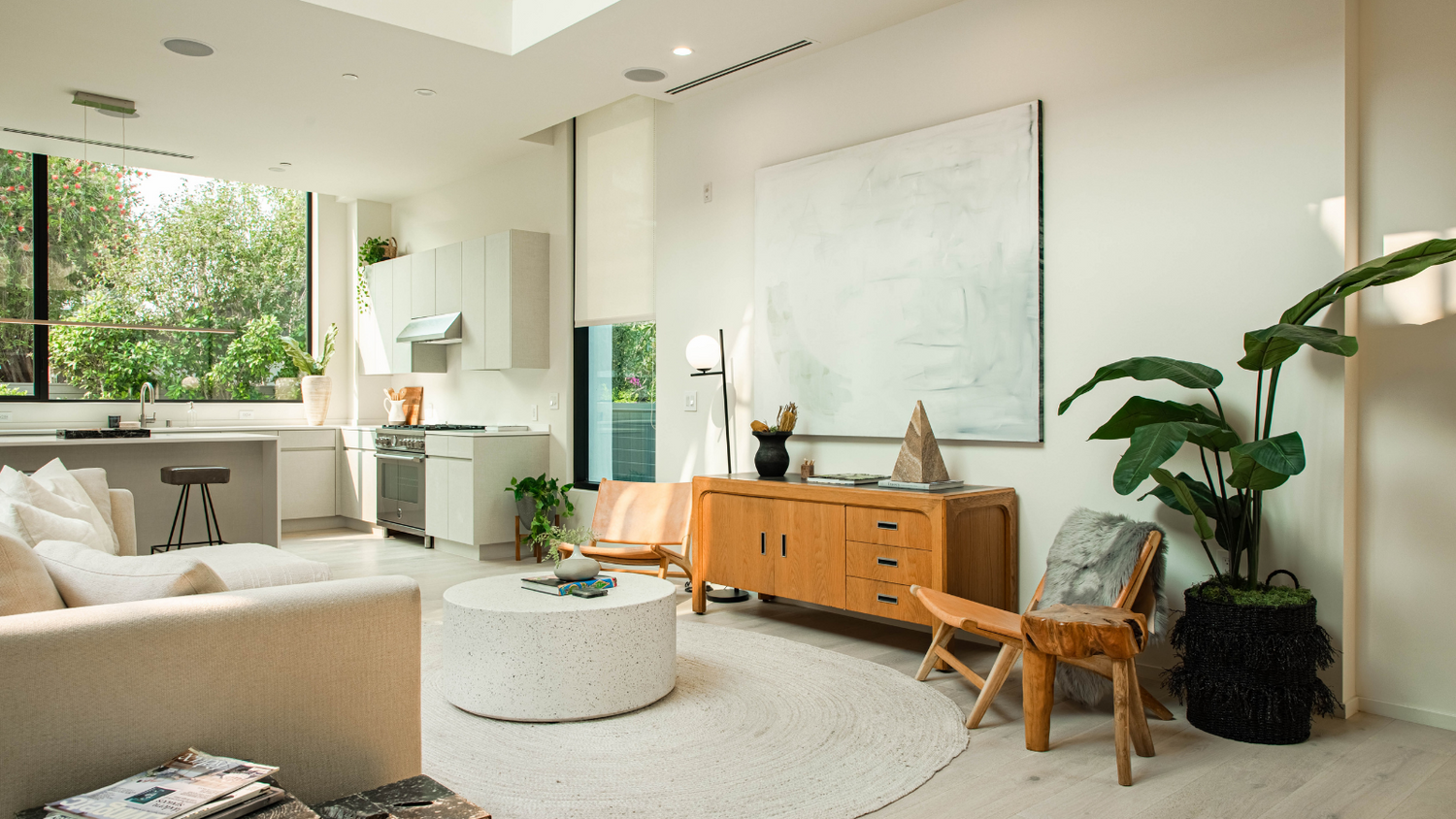Are smart lights worth it?
Lightwave explores reasons why smart lighting is a positive upgrade to make to your home. Find out more about the cost, environmental and health benefits of smart lighting and how you can begin your smart home adventure today.
What is smart lighting?
The term ‘Smart lighting’ generally refers to a lighting system that can be controlled remotely using a smartphone app at or whilst away from your home. This can comprise a simple smart bulb through to a more comprehensive hub-based system controlling smart light-switches with built-in wireless technology. The benefits of smart lighting include the convenience (and wow factor) of being able to trigger lighting scenes from your phone; saving energy by being able to turn your lights off from anywhere; and turning lights on automatically on random times for security. Offerings such as Lightwave’s Smart Series with its matching metallic finishes can also add style and sophistication to any interior.
What are the key components of a smart lighting system?
Most smart lighting systems are based around a central smart hub that simply plugs into a spare port in your existing wireless broadband router. The hub acts as a gateway which allows wireless communication between the smart switches or bulbs in your home and your phone or tablet. Many smart devices use a ‘mesh’ network to initiate this communication whereby each smart device in the home wirelessly connects to its nearest neighbour passing on commands. Conversely, the Lightwave Link Plus is able to communicate directly with corresponding smart devices across the home due to its excellent wireless range. Some smart bulbs or smart systems have the advantage of not requiring a hub, as they utilise your existing Wi-Fi Network to send commands to each device; however, the downside of such systems is that they can also suffer from the same wireless range limitations common with local Wi-Fi networks.
plugs into a spare port in your existing wireless broadband router. The hub acts as a gateway which allows wireless communication between the smart switches or bulbs in your home and your phone or tablet. Many smart devices use a ‘mesh’ network to initiate this communication whereby each smart device in the home wirelessly connects to its nearest neighbour passing on commands. Conversely, the Lightwave Link Plus is able to communicate directly with corresponding smart devices across the home due to its excellent wireless range. Some smart bulbs or smart systems have the advantage of not requiring a hub, as they utilise your existing Wi-Fi Network to send commands to each device; however, the downside of such systems is that they can also suffer from the same wireless range limitations common with local Wi-Fi networks.
The most common components of a smart lighting system include smart switches and smart bulbs. Smart bulbs are popular due to their simplicity, as no installation or wiring is required, and their relatively low cost. Many bulbs may have dimming or colour changing technology built in. The significant disadvantage of smart bulbs, however, is that they cannot be remotely controlled if the circuit providing power to them turned off at the light-switch. Smart bulbs may therefore be best suited for applications involving table lamps powered from sockets or power sources without manual wall switches.
A more comprehensive smart lighting option is to replace standard light-switches with a smart switch or smart dimmer. This gives the advantage of providing remote and standard manual controls as well as the ability to monitor the on/off status of the light even when it is tuned off at the switch. Smart dimmers, such as the offering from Lightwave in 1-4 gang options, offer a convenient and attractive solution that is easy to fit as it does not require any extra wiring and is a simple swap for your existing switch.
Smart lighting systems can have additional clever features that can be set up using their corresponding smartphone app. Lightwave dimmers include the ability to group dimmers and create ‘trigger’ devices. This means that lighting scenes integrating multiple dimmers can be triggered at the touch of just one ‘magic’ dimmer button that can be designated on any Lightwave smart device. Additionally, linking to the web-based service ‘IFTTT (if this then that) can allow the creation of sets of rules or ‘recipes’ which allows you to control other 3rd party devices. For example, from using a Lightwave dimmer to control your automated blinds, controlling your lights based on the weather to turning your lights on when your smart smoke alarm detects smoke.
Smart speaker systems such as Amazon Alexa, Apple HomeKit or Google Home have recently added a whole new dynamic to smart home offerings, as you can now control your smart devices instantly using voice commands without having to even open up your smart app. As this exciting new market expands, you can expect increasing numbers of smart connections to integrate into these platforms and the possibilities for smart home to rapidly develop.
How much do smart lights cost?
In the last 10 years smart lighting has gone from being a science fiction luxury for those fortunate enough to be able to meet the considerable cost to a genuine affordable option. That said, prices can still vary enormously, from a few £s up to £1000s for a complete house setup. Despite the apparent higher cost of larger systems, many benefit from being modular meaning that they can be added to incrementally over time thus avoiding large upfront costs. Once the central hub has been set up, you can add as many smart devices as you like and focus on key areas such as the living room or bedroom. A starter kit can be the ideal introduction to smart lighting, automating the main lighting in your room for less than a couple of hundred pounds.
The benefits of smart lighting
Let’s be honest, the main reason most of us want smart lighting is the cool factor. Being able to create scene lighting effects at the touch of a button from our smartphone, or even by voice commands is something that will impress friends and family and brings smile to your face. However, there are also many practical reasons for investing in the technology. Security is a big concern for many people, and smart lighting can help by allowing you to turn indoor and outdoor lights on when you aren’t in to deter unwanted attention. Lightwave even allows you to turn lights on using unpredictable random timers to make it look like you are in when you’re out.
Some smart lighting tricks are also immensely practical. Programming one gang of a Lightwave double dimmer to become a ‘magic’ switch that can control other smart devices from one place is something that saves the time, effort and cost of wiring in extra switches. With systems such as Lightwave, you can also link to other types of devices such as power sockets and heating devices. Why not have one button on your light switch that also kills your standbys, or turns on your tv/Wi-Fi? Anyone with mobility issues can also benefit from being able to control lights from one place, and especially from app or voice control.
Another significant motivation for upgrading to smart home technology is to save energy and thus money. The most significant impact in terms of saving energy has been focused on smart heating, which can ensure that your heating is not left on when you aren’t at home, and can be tailored room by room to reduce the unnecessary heating of unused domestic spaces. However, having greater control of your lighting when set to timers, and being able to turn lights off when you're out, can also save you money. Equally, being able to turn off your entire living room from one smart light switch encourages energy saving behaviour by making it that much easier.
It is also important to see the installation of attractive hardware into your home as an investment that can have a positive impact on your property value and add that wow factor for potential buyers. Attractive metallic dimmers and matching accessories can therefore often pay for themselves.
Are smart lights worth it?
Whilst it’s not yet an essential step to smarten up your home lighting, the technology has certainly evolved beyond being a mere gimmick. Being able to turn on lights remotely can pay dividends when it comes to security, and smart switches may surprise you in terms of their day to day practicality. Equally, though installing smart heating controls or simply swapping to LED lamps might be the better bet for making the most significant energy savings, having greater control of your lighting from anywhere cannot hurt.
Whilst, standards and individual technologies will certainly change and evolve, a degree of future proofing is guaranteed by the fact that most systems are now integrated with popular standardised platforms such as Apple HomeKit, Amazon Alexa, IFTTT and Google Home. As these platforms extend their reach, the problem of interoperability and compatibility between systems, traditionally a significant barrier, is becoming increasingly irrelevant. The smart home is therefore definitely here to stay.
Request a home consultation from Lightwave.



